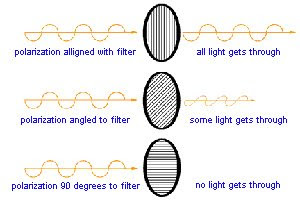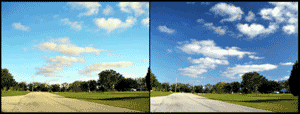At the same time, if the sun is about 90 degrees on the side closest to the axis of the lens, the effect is maximum. To reduce glare on surfaces such as water, the goal has to be about 30-40 degrees from the surface.

You can also use polarizing filters with other types of filters. In doing so, the polarizing filter should be the last in its objective. This rule is not hard to remember, because in most cases do not have external threading. Try it! The combination of color filters and polarizers can give unusual effects, enlargement or reduction of some of the colors in the photo.
A final point to consider: the use of iodine filters can not withstand the heat and ultraviolet light. Therefore, applying the filter only when you really need it and keep it in a case in the rest of the time. Simple! Used correctly, a polarizing filter will last for about 5-6 years before it needs replacing.





